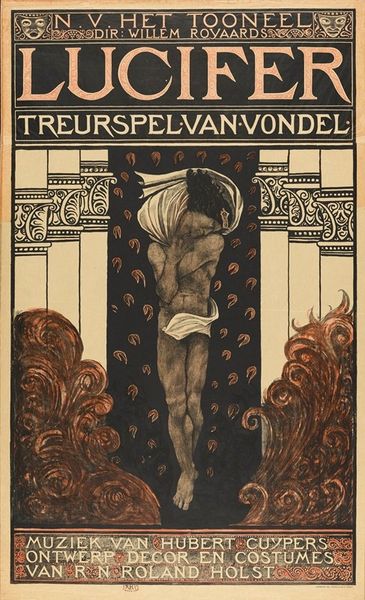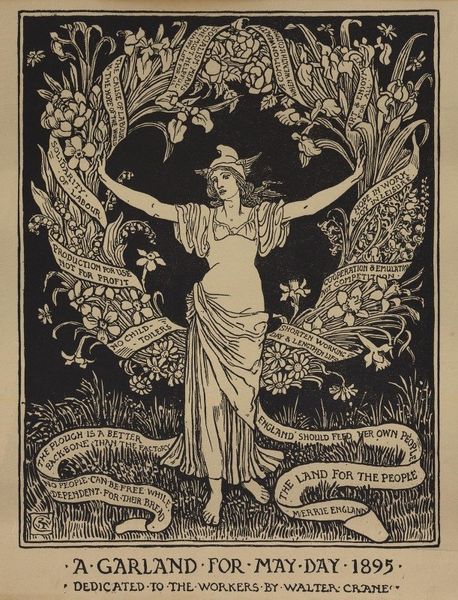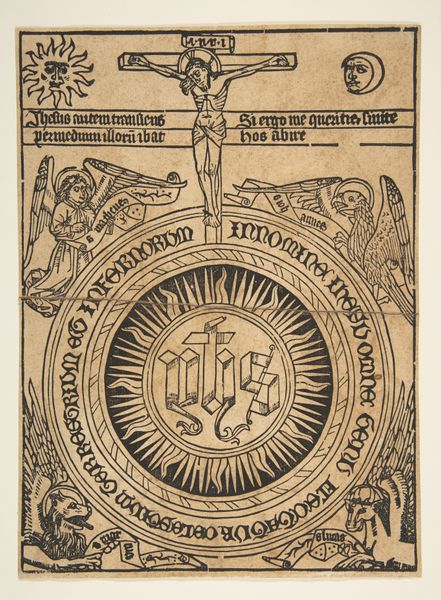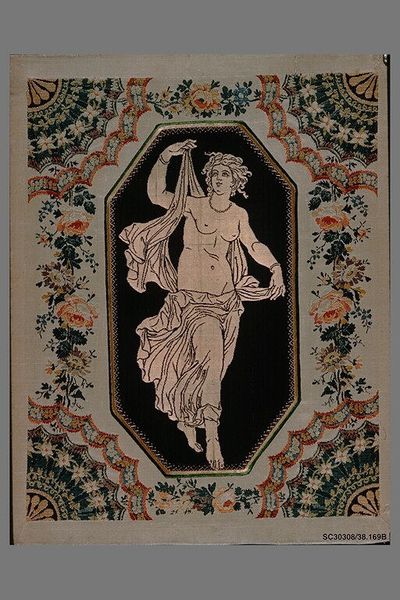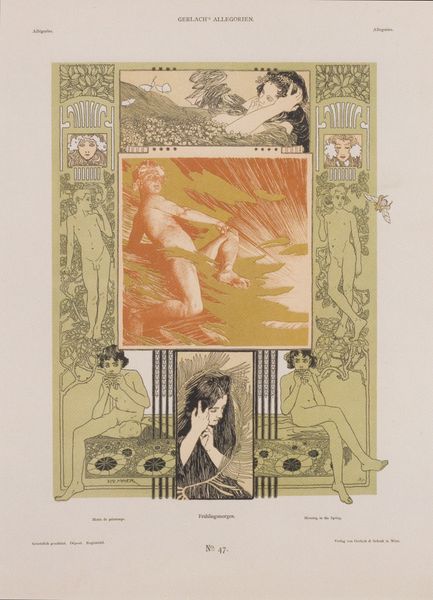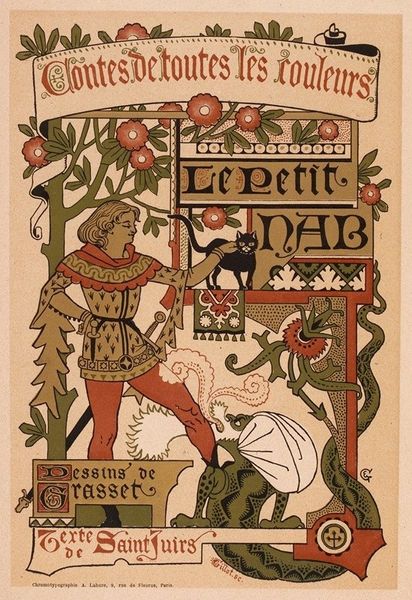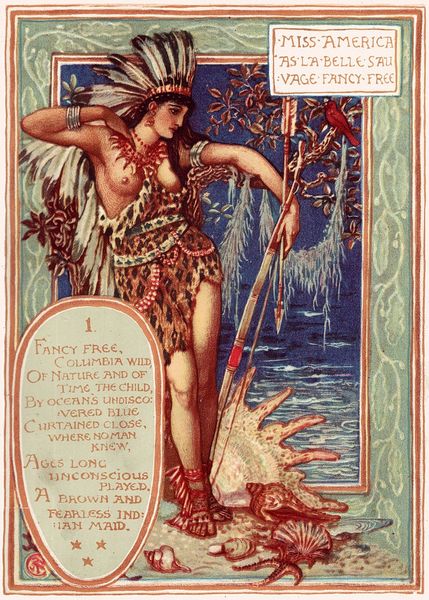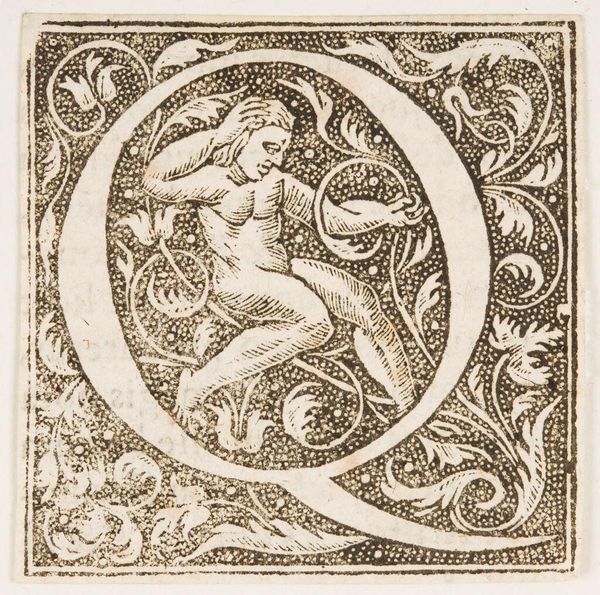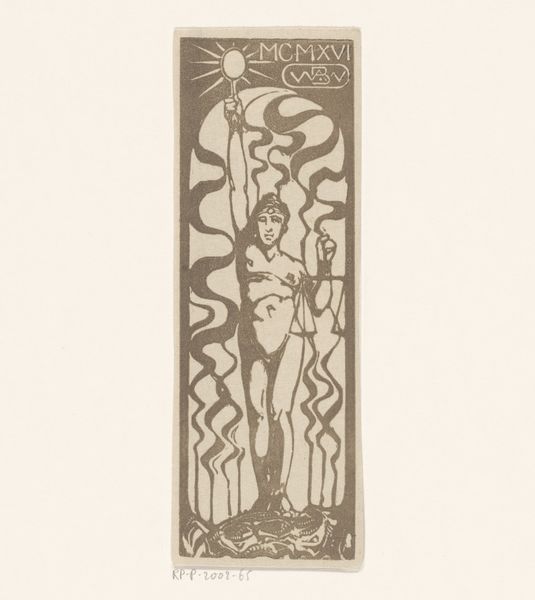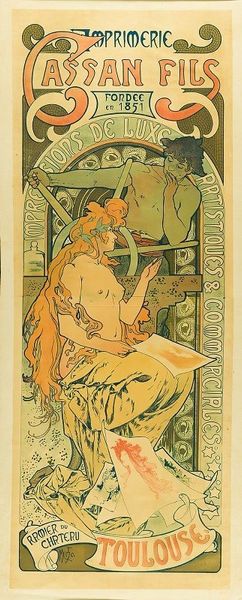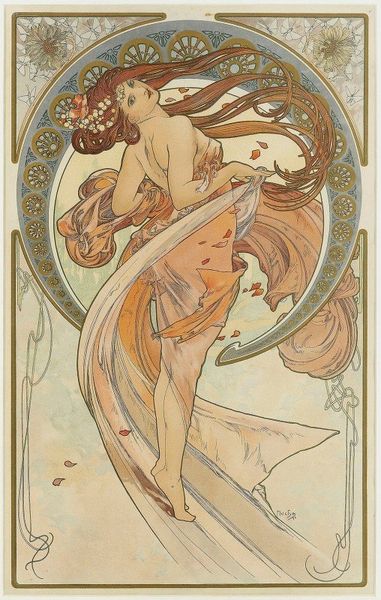
Omslagontwerp voor; Feestprogramma van de Algemene Nederlandse Diamantbewerkersbond bij de invoering van de achturendag 1911
0:00
0:00
drawing, graphic-art, print, typography, poster
#
drawing
#
graphic-art
#
art-nouveau
# print
#
landscape
#
figuration
#
typography
#
symbolism
#
poster
Copyright: Public Domain: Artvee
Curator: The tones of sepia and ochre lend a distinctive warmth to this graphic piece, what do you think? Editor: I’m struck by the figure—an idealized male nude, posed like a triumphant hunter. It feels…almost classical in its heroic aspirations, yet also a bit unsettling, given the context. Curator: Exactly. This is the cover design for the celebratory program of the Dutch Diamond Workers' Union—the ANDB—upon the introduction of the eight-hour workday in 1911, by Richard Nicolaüs Roland Holst. Note how “16 hours for your goal” are inscribed over his shoulder. Editor: So, it’s a visual argument, framing the fight for reduced hours as a quest? It’s interesting that they’re appropriating such potent imagery. Curator: Indeed. Roland Holst was deeply involved in the socialist movement and often blended symbolism with social commentary. The bow and arrow are more than mere hunting tools. The image connects with earlier, deeply held cultural beliefs in striving and justice. Editor: It is such a carefully constructed image. Even the typeface used for the program title reinforces a sense of grounded stability. The lettering gives an ornate embellishment, an attempt at luxury? Curator: The stylized Art Nouveau details frame the central figure, guiding the eye. Notice how the border unifies both typography and central imagery; both contribute meaning. Editor: This really captures a moment of radical social change. It’s fascinating to see those aspirations reflected in art, appropriating heroic myths for the working class. What looks like idealized propaganda does capture an attempt for fair labor practices that so many struggled and continue to struggle for. Curator: It's true; the symbol echoes across time, representing our ongoing pursuits. It really encapsulates how visual rhetoric continues to speak, even if its original audience is long gone. Editor: Yes, and even as the cultural symbols morph with the changing world, the need to express the demand for better work/life balance rings even more familiar today.
Comments
No comments
Be the first to comment and join the conversation on the ultimate creative platform.

